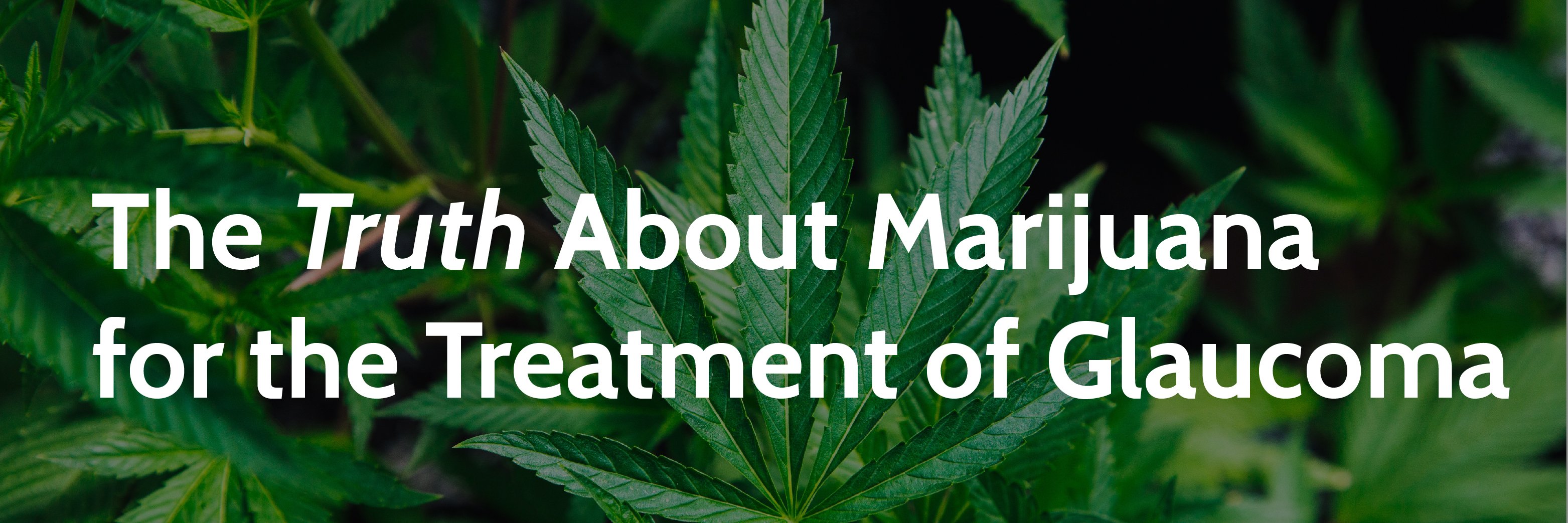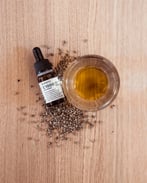
Every once in a while, you will get this question… “Can I just smoke marijuana to treat my glaucoma?” Many patients have heard somewhere along the way that marijuana can be an effective treatment for elevated intraocular pressure (IOP) or glaucoma. And a lot of patients aren’t afraid to ask if you can prescribe it for them. So, does it really work?
Research completed in the 1970’s and 1980’s did show that there was a measurable decrease in IOP for 3-4 hours after either smoking cannabis or ingesting THC as a pill or injection. But as we all know, in order to treat glaucoma and save vision, eye pressure must be controlled 24 hours a day. So, in order to reduce IOP by 3-5 mmHg, and maintain that reduction throughout the day/night, one would have to ingest approximately 18-20 mg of THC six to eight times per day, every day.
Could you imagine?! The potential negative effects on mood, mental clarity, and lung health (if smoked) would be significant and these risks would far outweigh the benefits. These people would be unable to drive, operate machinery, or engage in many common daily activities. Additionally, the cost of using this much marijuana every 3-4 hours, every day would be extremely high.
 Another way to look at this is to think about alcohol. Alcohol also has been shown to have a moderate impact on lowering IOP for an hour or so after you have a drink. No doctor would ever recommend that you drink alcohol every hour to treat your glaucoma. Especially when there are many other effective treatments available that are much more cost-effective, simple, and with far less side effects.
Another way to look at this is to think about alcohol. Alcohol also has been shown to have a moderate impact on lowering IOP for an hour or so after you have a drink. No doctor would ever recommend that you drink alcohol every hour to treat your glaucoma. Especially when there are many other effective treatments available that are much more cost-effective, simple, and with far less side effects.
There have also been studies on the use of THC in other forms such as eye drops, pills, and cigarettes. Eye drops led to significant burning upon instillation and did not show any measurable effects on IOP. Additionally, a sublingual compound also showed no decrease in IOP. In another study, patients were offered THC-containing pills or cigarettes and within 9 months, all of those people asked to stop due to unfavorable side effects.
Additionally, while marijuana has been shown to lower eye pressure, it also lowers blood pressure throughout the body. Because we know that optic nerve damage can also be due to reduced blood flow to the optic nerve, marijuana use can decrease the blood flow to the nerve even more, cancelling out any benefit that would occur from lowering IOP.

But what about CBD? CBD is a derivative of cannabis that does not have mood-altering effects. CBD has received a lot of attention in recent years due to its possible benefits in patients with certain medical conditions. However, there is no accepted current research that shows CBD to be an effective treatment for glaucoma. One study actually showed that CBD may even increase IOP, which would obviously make glaucoma worse.
So, as it stands, the best treatments for glaucoma or elevated IOP are still prescription eye drops, or laser/surgical procedures, depending on the type and severity of glaucoma. Sorry to burst your patient’s bubble!
|
Clinical Guide to Ophthalmic Glaucoma Medications book cover_Clinical Guide to Glaucoma Meds-06 Topical intraocular pressure (IOP) lowering medications are typically the first-line treatment for patients with elevated intraocular pressure. The drugs used to treat glaucoma are classified based on their active ingredient. Over the years, glaucoma medications have come and gone from the market, so we’ve put together a quick reference chart of all the currently utilized topical drugs, their formulations, dosage schedule, and mechanisms of action. Just click the download button! |

